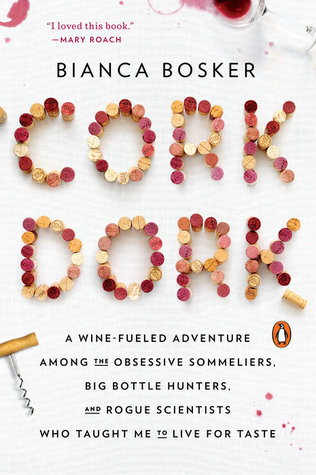More on this book
Community
Kindle Notes & Highlights
Started reading
June 1, 2020
biological and oxidative aging process for Amontillado sherry; the nuances of Fino, Manzanilla, Amontillado, and Oloroso sherries; the killer pairing of an Oloroso with olives and eighteen-month-old jamón; the “umami-type flavors that are more of that oxidation”; the widespread confusion of dryness and tannin; and wine trends of the 1800s.
While Plato argued that hearing and sight could bring aesthetic pleasure, the experiences of the nose and mouth were fleeting, intellectually bankrupt stimulations.
Meursault (a Chardonnay grown in Burgundy’s Meursault village)
Marsannay (a Chardonnay grown about twenty miles over in Burgundy’s Marsannay village).
distinguish a Sangiovese made in Montalcino from one made in Chianti,
Blind tasting practice works best when sommeliers train with classic examples of wines. The bottles should exemplify the typical style of a Malbec from Mendoza, Argentina, or a Grenache blend from Châteauneuf-du-Pape in France, for instance.
Champagne we were drinking made without dosage, a mixture of sugar and wine often added to bottles of sparkling wine, sometimes called the liqueur d’expédition. (A quick warning: oenophiles use an unnecessary number of French words in daily life. Towel is serviette, bubbles are pétillance, and table settings are the mise-en-place. Pretentious? Oui.)
Morgan plunged into the five key attributes that make up the “structure” of a wine: sugar, acid, alcohol, tannins, and texture, also referred to as “body.”
the wine has higher alcohol levels, where thin, quick tears, or wine that falls in sheets, hint at lower alcohol levels.
Next, spit it out or swallow. Place the tip of your tongue against the roof of your mouth, and pay attention to how much you salivate. A lot or a little? Swimming pool or sprinkler? If you’re not sure, tip your head forward so your eyes are facing the floor. If you opened your mouth right now, would you drool? If so, you’re tasting a higher-acid wine. If not, it’s likely a lower-acid wine. (The former tends to hail from cooler
growing regions, and the latter from warmer areas.) To
Warmer climates lead to riper grapes with a higher concentration of sugar, which, by the laws of fermentation, will produce wines with higher alcohol.
Grapes from cooler climates generally have lower concentrations of sugar, yielding wines with lower alcohol.
Take note of how far into your
mouth and throat you can feel the burning heat of the alcohol. The back of your tongue? It’s probably lower alcohol—around 12 percent for reds. The back of your throat, near your jaw? Medium, closer to 13, edging on 14 percent. Are you warm all the way down by your sternum? Could be 14 plus—high. Alcohol is a feeling more than a taste.
On to tannins. These are natural compounds—polyphenols, if you want to get technical—that can come from the skins, stems, or seeds of grapes, as well as the wood barrels in which a wine may have been aged. (The latter is more often responsible for the tannins in white wines, which usually spend less time than reds soaking in skins and seeds.) Tannins are more a texture than a taste, and therefore distinct from whether the wine is “dry,” which refers to the absence of sweetness.
white wines high in acid and sugar, like certain Rieslings, the invigorating tension in their tastes that makes them so delightful.
And since residual sugar can make wines more viscous, you can also sense sweetness by feeling out the weighty thickness or pillowy softness of a wine.


